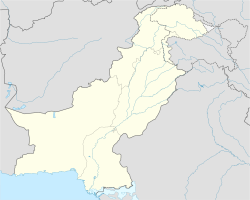Seetpur سیت پور | |
|---|---|
 The Shahi Mosque of Seetpur, with the tomb of Tahir Khan in background | |
| Coordinates: 29°14′26″N70°50′29″E / 29.24067°N 70.84128°E [1] | |
| Country | |
| Province | |
| District | Muzaffargarh |
| Tehsil | Alipur |
| Time zone | UTC+5 (PST) |
| • Summer (DST) | UTC+6 (PDT) |
| Area code | 34480 |
Seetpur or Sitpur is a city and union council in Tehsil Alipur of Muzaffargarh District in south Punjab, Pakistan. Agriculture is the mainstay of the regional economy.
The Government High School of Seetpur was established by the British during the British Raj. Main tourist attractions in Seetpur include the 16th century mausoleum of Tahir Khan and the Shahi Mosque. [2] Its architecture resembles that of the Multan tombs, but it is smaller in size compared to them.

